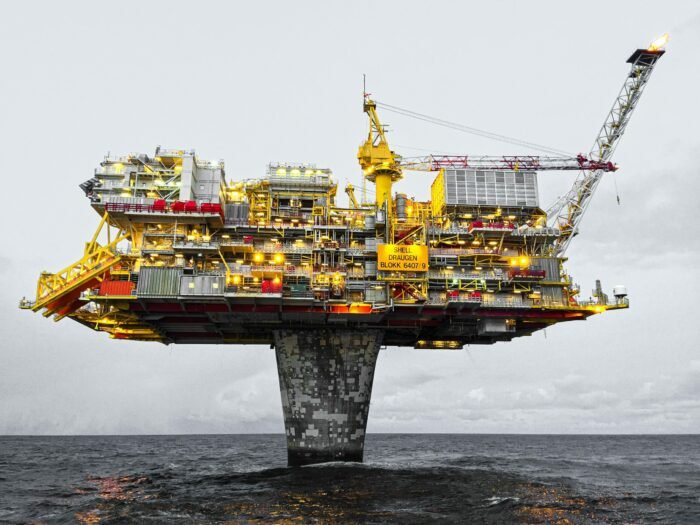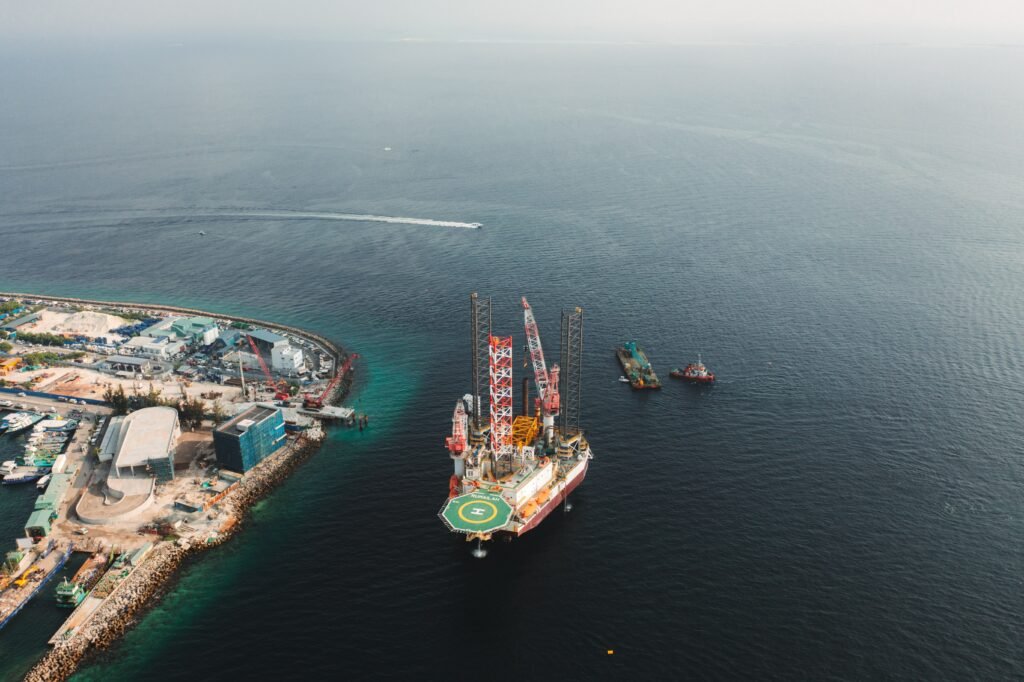Welcome to the high seas of offshore oil rig management, where towering structures rise from the depths of the ocean to harness precious resources. It’s a world that combines innovation, engineering prowess, and logistical complexity like no other. But amidst these vast opportunities lie key challenges that must be navigated with precision and expertise.
In this blog post, we dive deep into the realm of offshore oil rig management and explore the hurdles that operators face on a daily basis. From environmental hazards to regulatory compliance, workforce safety to equipment reliability, we uncover the pressing issues that demand attention in this dynamic industry.
So fasten your seatbelts (or should we say life jackets?) as we embark on a journey through some of the most critical challenges faced by those working in offshore oil rig management. Let’s set sail!
Statistics on Key Challenges in Offshore Oil Rig Management
Here are some important statistics:
- The global demand for hydrocarbon energy continues to drive production, particularly among new assets in offshore reservoirs. Deepwater and ultra-deep-water oil and gas production began in the early 1990s, reaching approximately 1.5 million barrels per day (BPD) in 2000, and now exceeds 7.2 million barrels of oil equivalent per day (BOED).
- The global offshore drilling market is expected to reach $56.97 billion by 2027, and nearly 30% of global crude oil production comes from offshore sources.
- Offshore oil and gas production faces several challenges, including safety, flow assurance issues, and taking advantage of data.
- The increase in deep-water hydrocarbon production has placed significant demands on offshore platforms’ and vessels’ automation systems. These demands most frequently affect how these various automation systems are used to improve and increase deep-water production, particularly how those systems interface with one another.
- Offshore system safety and operational challenges in harsh Arctic operations include but are not limited to catastrophic accidents, operational downtime, system failures, and occupational risk.
- Reducing environmental impact is one of the key challenges facing floating production facilities.
Key Challenges in Offshore Oil Rig Management
1. Navigating Environmental Hazards: Challenges in Offshore Oil Rig Safety
The offshore oil rig industry operates in a delicate dance with the environment, constantly facing the challenge of navigating environmental hazards while ensuring safety on board:
- One of the primary concerns is the potential for oil spills, which can have devastating effects on marine life and ecosystems. To mitigate this risk, rigorous safety protocols must be established and followed diligently. From regular equipment inspections to comprehensive training programs for crew members, every effort is made to prevent accidents and minimize environmental impact.
- However, Mother Nature can be unpredictable at times. Harsh weather conditions like hurricanes or storms pose significant challenges to offshore operations. Rig managers must constantly monitor weather patterns and make informed decisions about whether to halt or continue production in order to prioritize both worker safety and environmental conservation.
- Furthermore, managing waste disposal presents an ongoing challenge. Proper handling of hazardous materials such as chemicals, drilling muds, and cuttings requires strict adherence to regulations set by governing bodies. Rig operators must ensure that all waste materials are properly contained and disposed of in accordance with environmental guidelines.
- Innovative technologies also play a crucial role in addressing these challenges. The use of advanced sensors and monitoring systems enables real-time detection of leaks or abnormalities that could lead to environmental harm. Additionally, implementing improved containment methods like double-hulled tanks enhances spill prevention measures.
By proactively navigating these environmental hazards through stringent safety practices and investments in cutting-edge technology, offshore oil rig operators strive towards sustainable operations that strike a balance between energy production needs and ecological preservation – ultimately safeguarding our precious marine ecosystems for future generations.
2. Remote Operations: Overcoming Logistical and Communication Challenges
Operating an offshore oil rig is no small feat. It requires meticulous planning, coordination, and effective communication to ensure smooth operations in a remote and isolated environment. However, the distance from shore poses significant logistical challenges that must be overcome:
- One of the main challenges faced in remote operations is managing the supply chain. With limited access to essential resources and equipment, careful planning is required to ensure that everything needed for daily operations is available on-site. This includes fuel, drilling fluids, spare parts, food supplies – you name it! Coordinating these deliveries can be complex due to weather conditions and transportation logistics.
- Another challenge lies in maintaining efficient communication between the offshore rig and onshore teams. The vast distance makes it difficult to convey information promptly or troubleshoot issues effectively. Delays in communication can lead to costly downtime or even compromise safety protocols. To tackle this challenge, technological advancements have been instrumental in establishing reliable satellite communications systems that enable real-time data transmission between locations.
- Furthermore, remote operations bring forth unique personnel management challenges as well. Crew members often spend weeks or months away from their families living onboard the rig. This isolation can impact morale and mental health if not properly addressed by management through regular welfare initiatives such as recreation facilities or internet connectivity for crew members’ personal use.
- Despite these challenges, offshore oil rig operators have found innovative solutions to overcome logistical hurdles and improve communication efficiency during remote operations. By leveraging advanced technology like drones for supply deliveries and implementing robust digital platforms for seamless data exchange among teams both onshore and offshore are able to collaborate more effectively.
The successful management of remote oil rigs relies heavily on overcoming logistical obstacles while ensuring clear lines of communication with off site personnel who play a vital role in maintaining operational excellence despite being miles away from the actual site itself.
3. Regulatory Compliance: Managing Complex Legal and Safety Requirements
When it comes to offshore oil rig management, one of the key challenges that operators face is ensuring regulatory compliance. With complex legal and safety requirements in place, navigating through these regulations can be a daunting task:
- There are numerous international, national, and regional regulations that must be adhered to. These include environmental protection laws, health and safety guidelines, and operational standards. Each jurisdiction may have its own set of rules, making it essential for oil rig managers to stay updated on the latest requirements.
- Additionally, compliance involves more than just understanding the regulations; it also requires implementing effective processes and protocols to ensure adherence. This means developing comprehensive safety plans, conducting regular audits and inspections, training personnel on best practices, and maintaining accurate records.
- Furthermore, regulatory agencies often conduct rigorous inspections to ensure compliance. Non-compliance can result in hefty fines or even suspension of operations. Therefore, oil rig managers must constantly monitor their operations to identify any potential areas of non-compliance before they become major issues.
- Moreover, policies around worker safety play a crucial role in regulatory compliance as well. Oil rig operators must provide adequate personal protective equipment (PPE), implement emergency response plans, and address potential hazards effectively.
- Investing in robust safety systems not only helps meet regulatory requirements but also ensures the well-being of workers who operate under challenging conditions far from shore lines.
Managing complex legal and safety requirements is an ongoing challenge for offshore oil rig management. Teams need to stay up-to-date with evolving regulations while simultaneously implementing effective measures that keep both workers safe and operations compliant. Failure to do so could jeopardize not only the company’s reputation but also pose significant risks to human lives.
4. Workforce Health and Safety: Addressing Risks in Challenging Offshore Environments
Working on an offshore oil rig is no easy task. The men and women who brave the harsh conditions of these remote locations face unique challenges when it comes to their health and safety. From extreme weather conditions to hazardous chemicals, there are numerous risks that must be addressed:
- One of the main concerns in offshore environments is the potential for accidents and injuries. With heavy equipment, high-pressure systems, and complex operations, there is always a risk of accidents occurring. That’s why rigorous training programs are essential for all workers on offshore rigs.
- In addition to physical hazards, offshore workers also face mental health challenges due to the isolated nature of their work. Being away from family and friends for extended periods can lead to feelings of loneliness and isolation. Employers must prioritize mental health support services to ensure the well-being of their workforce.
- Another major concern in offshore environments is exposure to harmful substances such as chemicals and gases. Workers need adequate personal protective equipment (PPE) to minimize exposure risks. Regular monitoring should also be conducted to assess air quality levels and identify any potential hazards.
- Emergency response planning plays a crucial role in addressing risks on offshore rigs. In remote locations, quick access to medical facilities may not always be possible, making it essential for onsite medical personnel trained in emergency care procedures. Ensuring workforce health and safety in challenging offshore environments requires constant vigilance from both employers and employees alike.
By implementing comprehensive training programs, providing necessary PPE, prioritizing mental health support services, conducting regular monitoring for hazardous substances, and having robust emergency response plans in place – we can minimize risks while maximizing productivity on these vital energy platforms.
5. Equipment Reliability: Maintaining Functionality in Harsh Offshore Conditions
When it comes to offshore oil rig management, ensuring the reliability of equipment is crucial for maintaining smooth operations. However, achieving this goal can be quite challenging in the harsh and unpredictable offshore environment:
- One of the main challenges faced by rig managers is the constant exposure of equipment to corrosive saltwater, high winds, extreme temperatures, and rough seas. These conditions can cause wear and tear on machinery, leading to potential breakdowns or malfunctions if not properly addressed.
- To overcome these challenges, rigorous maintenance protocols must be implemented. Regular inspections and routine servicing help identify any potential issues before they escalate into major problems that could disrupt production activities. Additionally, using high-quality materials resistant to corrosion can extend the lifespan of equipment in such demanding conditions.
- Another aspect that rig managers need to consider is having a robust supply chain management system in place. It ensures timely procurement of spare parts and components necessary for repairs or replacements when needed. This minimizes downtime caused by waiting for essential items to arrive from onshore suppliers.
- Moreover, investing in advanced monitoring technologies such as sensors and real-time data analysis systems enables proactive maintenance practices. These tools provide valuable insights into equipment health status and performance trends so that preemptive actions can be taken before failures occur.
- Furthermore, training personnel adequately plays a vital role in maintaining equipment reliability offshore. Equipping operators with proper knowledge about troubleshooting common issues empowers them to handle minor repairs promptly without relying solely on external technical support.
- Ensuring equipment reliability in harsh offshore conditions is an ongoing challenge that requires a combination of preventive maintenance measures, efficient supply chain management strategies, technological advancements, and well-trained personnel.
By addressing these factors proactively rather than reactively managing unexpected breakdowns becomes more feasible while promoting smoother operations at sea!
6. Emergency Response Planning: Mitigating Risks for Effective Crisis Management
When it comes to offshore oil rig management, one of the key challenges is ensuring effective crisis management through emergency response planning. The unpredictable nature of offshore environments and the potential for accidents or disasters necessitate thorough preparation and a well-coordinated response:
- One major obstacle in emergency response planning is the remoteness of these rigs. Being located far from shore means that help may not be readily available in case of an incident. This highlights the need for comprehensive contingency plans that include detailed protocols for communication, evacuation, and medical assistance.
- Another challenge is the complexity of offshore operations, which often involve multiple contractors and stakeholders. Coordinating their efforts during an emergency requires clear lines of communication and predefined roles and responsibilities. Regular drills and simulations can help identify gaps in coordination processes and provide opportunities for improvement.
- The harsh weather conditions prevalent at sea pose additional risks during emergencies. High winds, rough seas, or extreme temperatures can hinder rescue efforts or exacerbate the impact of a crisis situation. Incorporating weather monitoring systems into emergency plans can aid decision-making by providing real-time data on changing conditions.
- Furthermore, maintaining up-to-date equipment plays a vital role in effective crisis management on oil rigs. Regular inspections, maintenance schedules, and redundancy measures are necessary to ensure that critical safety systems function as intended during emergencies.
- Training plays a crucial role in mitigating risks during crises on offshore oil rigs. All personnel should receive comprehensive training on emergency procedures to ensure they are prepared to respond quickly and effectively when faced with hazardous situations. Overcoming challenges related to emergency response planning is essential for managing risks effectively on offshore oil rigs.
By addressing issues such as remote locations, complex operations, extreme weather, and outdated equipment, oil companies can create well-crafted plans that ensure the safety of personnel and assets during crises.
7. Sustainability and Environmental Impact: Balancing Operations with Ecological Concerns
Sustainability and environmental impact are key considerations in offshore oil rig management. Balancing operations with ecological concerns is a complex challenge that requires careful planning and implementation:
- One of the main issues in this regard is the potential for oil spills and leaks, which can have devastating effects on marine life and ecosystems. Rig operators must prioritize measures to prevent such incidents, including regular maintenance of equipment and rigorous safety protocols.
- Another aspect of sustainability is minimizing the carbon footprint associated with offshore drilling operations. This involves investing in technologies that reduce greenhouse gas emissions, such as using cleaner fuels or implementing energy-efficient systems on rigs.
- In addition to these measures, it’s important for companies to engage in responsible waste management practices. Proper disposal of waste materials, including chemicals used during drilling processes, is crucial to avoid polluting the surrounding environment.
- Furthermore, protecting biodiversity and sensitive habitats near offshore oil rigs should be a priority. Operators must conduct thorough environmental assessments before beginning operations to identify any potential risks or impacts on local ecosystems.
- Collaboration between industry stakeholders, regulatory bodies, and environmental organizations is vital for ensuring sustainable practices are implemented effectively.
- By working together towards shared goals, we can strive for a balance between economic interests and ecological preservation in offshore oil rig management.
Remember: It’s essential for businesses operating in this sector to prioritize sustainability efforts by actively seeking innovative solutions that minimize their ecological impact while maintaining operational efficiency!
Conclusion
Managing offshore oil rigs comes with a unique set of challenges that require careful planning, innovative solutions, and unwavering commitment to safety. From navigating environmental hazards to ensuring regulatory compliance, the complexities of offshore oil rig management cannot be underestimated. One of the key challenges in offshore oil rig management is the need to constantly navigate environmental hazards. The risks associated with drilling in deep waters can include hurricanes, tsunamis, and other natural disasters. Rig operators must have robust safety protocols in place to protect both their workers and the environment from potential harm.
Remote operations also pose significant logistical and communication challenges. Offshore oil rigs are often located far away from land, making it difficult for personnel to access them on a regular basis. Effective communication between onshore and offshore teams is crucial for smooth operations and prompt decision-making. Regulatory compliance adds another layer of complexity to offshore oil rig management. Oil companies must adhere to multiple legal requirements imposed by national governments as well as international bodies such as the International Maritime Organization (IMO) or the United Nations Convention on the Law of the Sea (UNCLOS). Meeting these regulations requires meticulous planning and ongoing monitoring.
Ensuring workforce health and safety is paramount in challenging offshore environments. Workers face numerous risks including extreme weather conditions, heavy machinery operations, exposure to hazardous materials, and isolation from medical facilities. Rig managers must implement comprehensive training programs, provide necessary personal protective equipment (PPE), conduct regular inspections, and establish emergency response plans to mitigate these risks effectively. Maintaining equipment reliability amidst harsh offshore conditions presents yet another challenge in rig management. Sustaining functionality requires routine maintenance checks amidst corrosive saltwater environments while also considering factors like vibration-induced wear-and-tear due to constant movement or high-pressure drilling activities.
Emergency response planning plays a critical role in mitigating risks effectively during crises situations such as blowouts or fires onboard an oil rig. Rig operators need thorough contingency plans outlining evacuation procedures, firefighting protocols, and communication channels to ensure the safety of personnel and minimize environmental impact. Finally, sustainability and environmental impact are essential considerations in offshore rig management. Oil companies must strive to maintain operational efficiency while minimizing their ecological footprint through responsible waste disposal practices, investing in cleaner fuel sources, and protecting sensitive habitats near rigs.
To summarize, managing offshore oil rigs presents a myriad of challenges that require comprehensive solutions to ensure successful operations. By addressing issues such as environmental hazards, regulatory compliance, workforce safety, equipment reliability, emergency response planning, and sustainability – oil companies can strive towards safe and sustainable offshore drilling activities for years to come!












